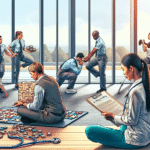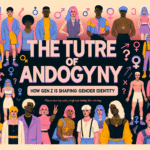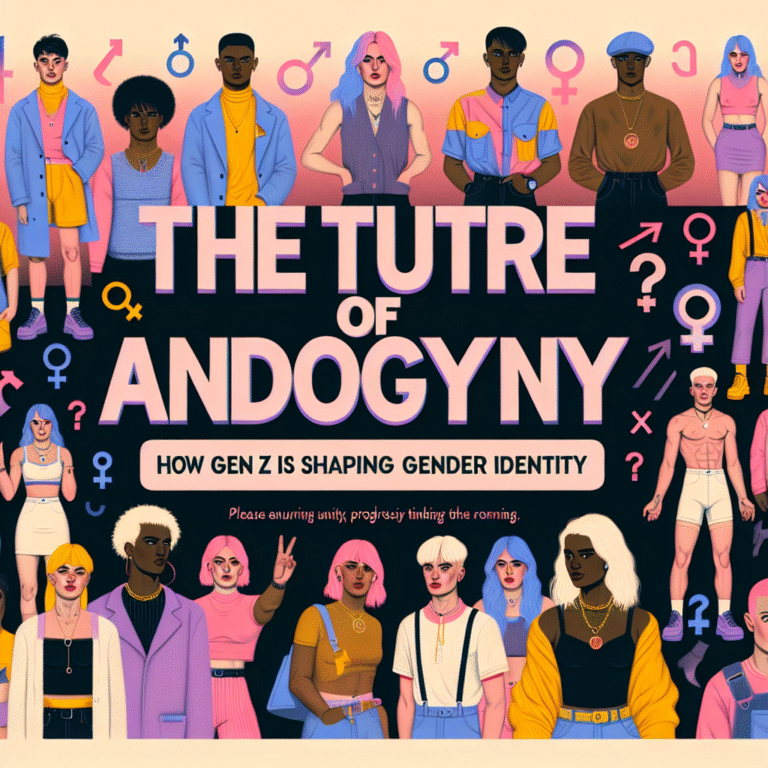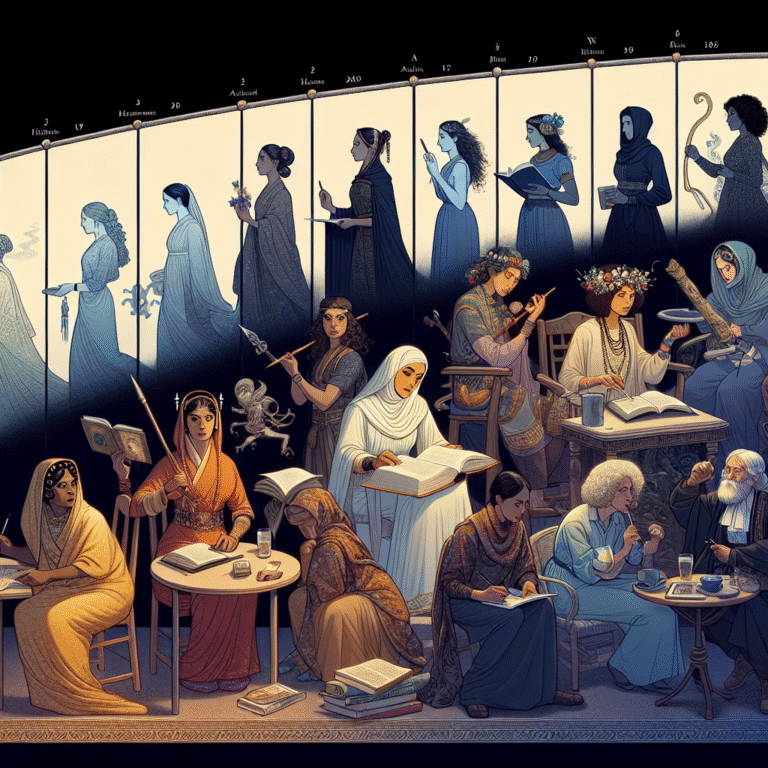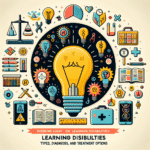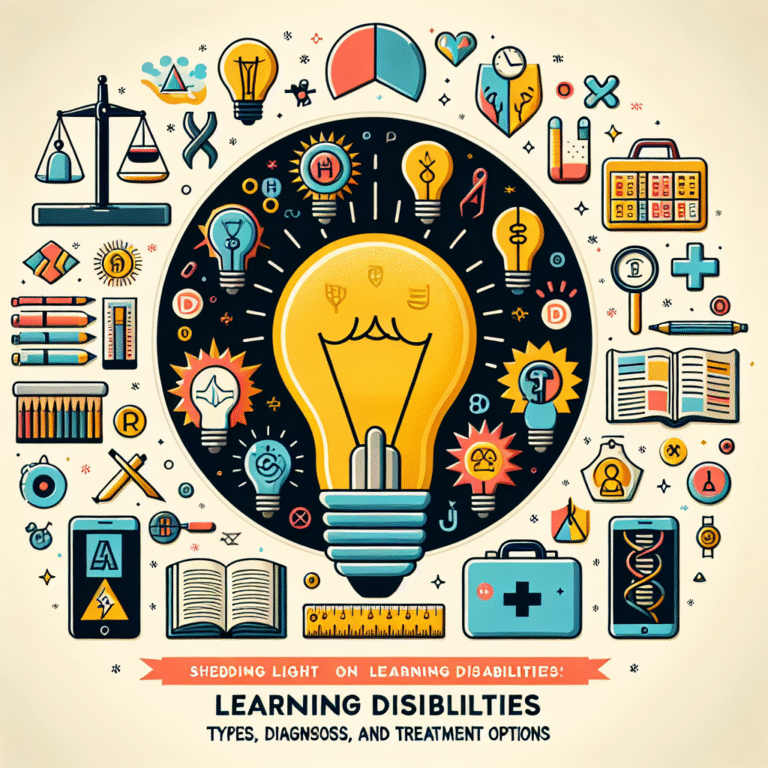
Introduction
In an era that heralds inclusivity and progress, gender stereotypes still loom large, constraining individual potential and shaping societal expectations. As we navigate the complex landscape of modern identity, the call to action is clear: Breaking the Mold: Challenging Gender Stereotypes in Today’s Society has become not only a necessary endeavor but also a profoundly impactful movement that seeks to redefine what it means to be a man or a woman in today’s world. This article will explore the roots of gender stereotypes, their implications, and the inspiring movements and case studies that exemplify the profound shifts occurring within our society.
The Foundation of Gender Stereotypes
Historical Context
The foundation of gender stereotypes dates back centuries, rooted in agricultural societies where roles were often divided based on physical capability. Traditionally, men were tasked with physically demanding roles, while women were relegated to nurturing and domestic responsibilities. Over time, these expectations became ingrained in cultural norms, perpetuating the argument that abilities and interests are inherently linked to gender.
Cultural Reinforcement
Stereotypes are upheld not only by societal structures but also through media representation, education, and family dynamics. Children are often bombarded with messages that dictate what is appropriate for their gender. These messages can be as overt as toy advertisements targeting boys and girls differently or as subtle as the language used in children’s books.
The Impact of Socialization
From an early age, boys and girls are socialized towards specific behaviors. Boys may be encouraged to play with trucks, while girls might be drawn towards dolls, reinforcing ideas about masculinity and femininity that can lead to limiting self-concepts. Investigating how these stereotypes manifest in everyday life allows us to challenge their validity and inspire change.
Current Landscape: Gender Stereotypes Today
Representation in Media
As we dive deeper into Breaking the Mold: Challenging Gender Stereotypes in Today’s Society, the role of media becomes increasingly prominent. Today, films and television series are producing more varied representations. For instance, the success of shows like Billions, which features strong female leads in traditionally male-dominated roles, showcases a shift in the narrative. Analysis of character arcs from studies reveals that audiences respond positively to diverse representations that defy stereotypes.
| Media Representation | Traditional Role | Challenged Role |
|---|---|---|
| Billions | Women as homemakers | Women as leaders in finance |
| Wonder Woman | Damsel in distress | Heroine breaking barriers |
| Big Mouth | Boys as aggressive | Boys as vulnerable and emotional |
Education Systems
Educational institutions are pivotal in shaping perceptions and can be a battleground for challenging gender norms. Initiatives that promote gender-neutral classrooms, inclusive curricula, and programs that encourage girls in STEM have begun to yield results. For example, schools that have adopted mixed-gender classrooms for certain subjects report a more balanced development of skills among students.
Workplace Dynamics
Consider the realm of professional occupations. The gender wage gap remains a troubling reality, underscoring the need for equality and representation. However, companies like Salesforce are leading the charge to break the mold, implementing policies that focus on equal pay and diversifying leadership roles. Reports indicate that organizations committed to gender diversity have shown improved performance and employee satisfaction.
Case Study: The Leap of Athletes
Sports can serve as a microcosm of society, illustrating the mechanics of gender stereotypes. Athletes like Serena Williams and Megan Rapinoe have become advocates for challenging traditional gender expectations. Their stories illustrate how extraordinary talent can defy conventional ideas of femininity. Williams, for example, has spoken candidly about the scrutiny female athletes face regarding their appearance, a battle that underscores the need for a shift in societal views—the essence of Breaking the Mold: Challenging Gender Stereotypes in Today’s Society.
Analysis of the Case Study
Serena Williams’ journey, intertwining both triumph and struggle against backlash for her powerful physique, highlights how societal stereotypes limit women’s participation in sports. Her success not only breaks barriers but also invites a broader conversation about body image and feminine strength, encouraging young girls to engage in sports without fear of judgment.
Voices of Change: Activism and Movements
Women’s Movements
The resurgence of women’s advocacy movements, such as the #MeToo movement, has brought gender equality to the forefront of societal discourse. These movements underscore the importance of not just championing women’s rights, but also addressing the stereotypes that lead to gender-based violence and discrimination.
Masculinity Reimagined
On the other side of the spectrum, men’s movements are also emerging, challenging traditional notions of masculinity. Campaigns that encourage men to embrace vulnerability and emotional expression are crucial to dismantling toxic masculine stereotypes that can lead to detrimental behavior. For example, the “Real Men Feel” initiative provokes discussions around male vulnerability, encouraging men to seek emotional support in a world that often discourages such expressions.
The Role of Technology and Social Media
Amplifying Voices
With the rise of social media, individuals are more empowered than ever to challenge stereotypes publicly. Platforms like Instagram, Twitter, and TikTok allow for the rapid sharing of personal stories and activism, creating a sense of community among those advocating for gender equality. Hashtags such as #BreakingTheMold have surged in popularity as they unify voices from diverse backgrounds.
Online Campaigns
Digital campaigns, such as HeForShe, mobilize support for women’s rights and challenge traditional gender roles. These campaigns allow men to engage as allies in the fight against gender inequality, fostering a collaborative approach to dismantling stereotypes. Research shows that inclusive movements garner more support, further demonstrating the significance of collective action in the fight against gender stereotypes.
Actionable Insights
Adopting Inclusive Language
One of the first steps individuals can take in Breaking the Mold: Challenging Gender Stereotypes in Today’s Society is to adopt inclusive language. This means using gender-neutral pronouns where appropriate, avoiding assumptions based on gender norms, and addressing behavior rather than attributing characteristics to gender.
Encouraging Diverse Representation
Organizations and institutions can strive for diverse representation in their hiring practices and marketing strategies. Companies that reflect societal diversity in their workforce are better equipped to understand and serve their varied clientele.
Mentorship Programs
Mentorship plays a crucial role in combating stereotypes. Programs designed for at-risk youth can help dismantle traditional views by providing relatable role models who embody diverse identities and paths to success.
Conclusion
Breaking the Mold: Challenging Gender Stereotypes in Today’s Society calls for an informed, collective effort to challenge long-standing norms. The stories of individual resilience, advocacy, and systemic change exemplified above highlight that it is essential to confront these stereotypes head-on. Whether through education, media representation, or active involvement in movements, every action contributes to the gradual dismantling of barriers that have held back generations.
As we move forward, it is vital to continue the dialogue, encourage diversity and inclusivity, and empower one another to embrace authenticity free from the shackles of outdated stereotypes. Each of us has a role to play in reimagining gender in a way that reflects the diverse identities that make up our society.
FAQ Section
What are gender stereotypes?
Gender stereotypes are widely held beliefs about the characteristics, behaviors, and roles considered appropriate for men and women. These stereotypes often limit individual expression and reinforce societal norms.How can we challenge gender stereotypes in daily life?
You can challenge gender stereotypes by using inclusive language, promoting diverse role models, and encouraging open discussions about gender issues.What impact do media representations have on gender stereotypes?
Media representations can reinforce or challenge gender stereotypes; positive depictions of diverse gender roles can promote acceptance and inspire change.Why is it important to involve men in gender equality discussions?
Involving men in discussions about gender equality is crucial because they can be powerful allies in challenging stereotypes and promoting equitable practices.- What are some successful initiatives aimed at breaking gender stereotypes?
Successful initiatives include #MeToo, HeForShe, and programs promoting girls in STEM, which all work towards creating awareness and facilitating a shift in societal attitudes towards gender.
By harnessing the insights and stories shared in this article, we pave the way for a future where Breaking the Mold: Challenging Gender Stereotypes in Today’s Society becomes not just an ideal, but a lived reality for every individual, regardless of gender.

